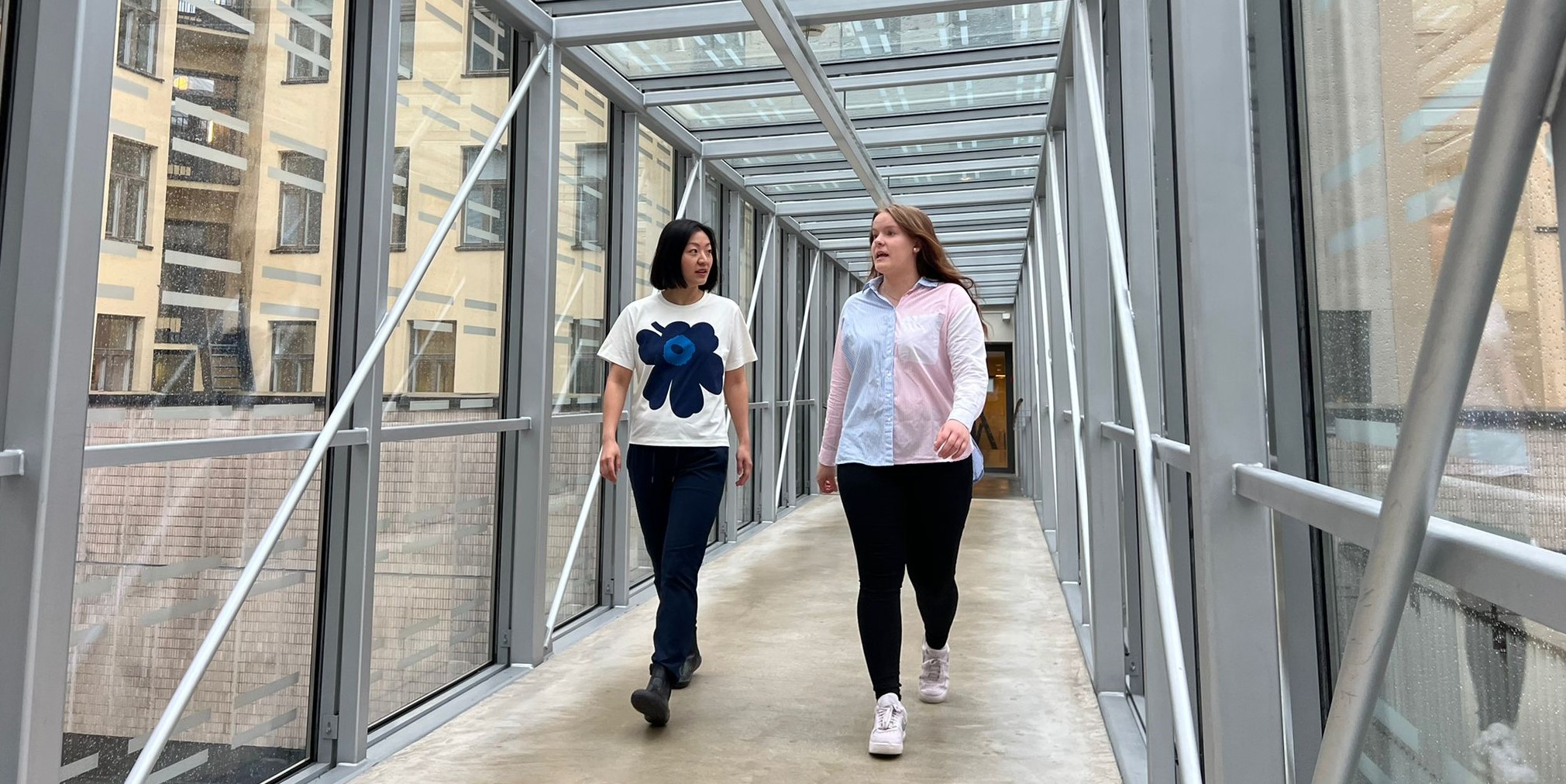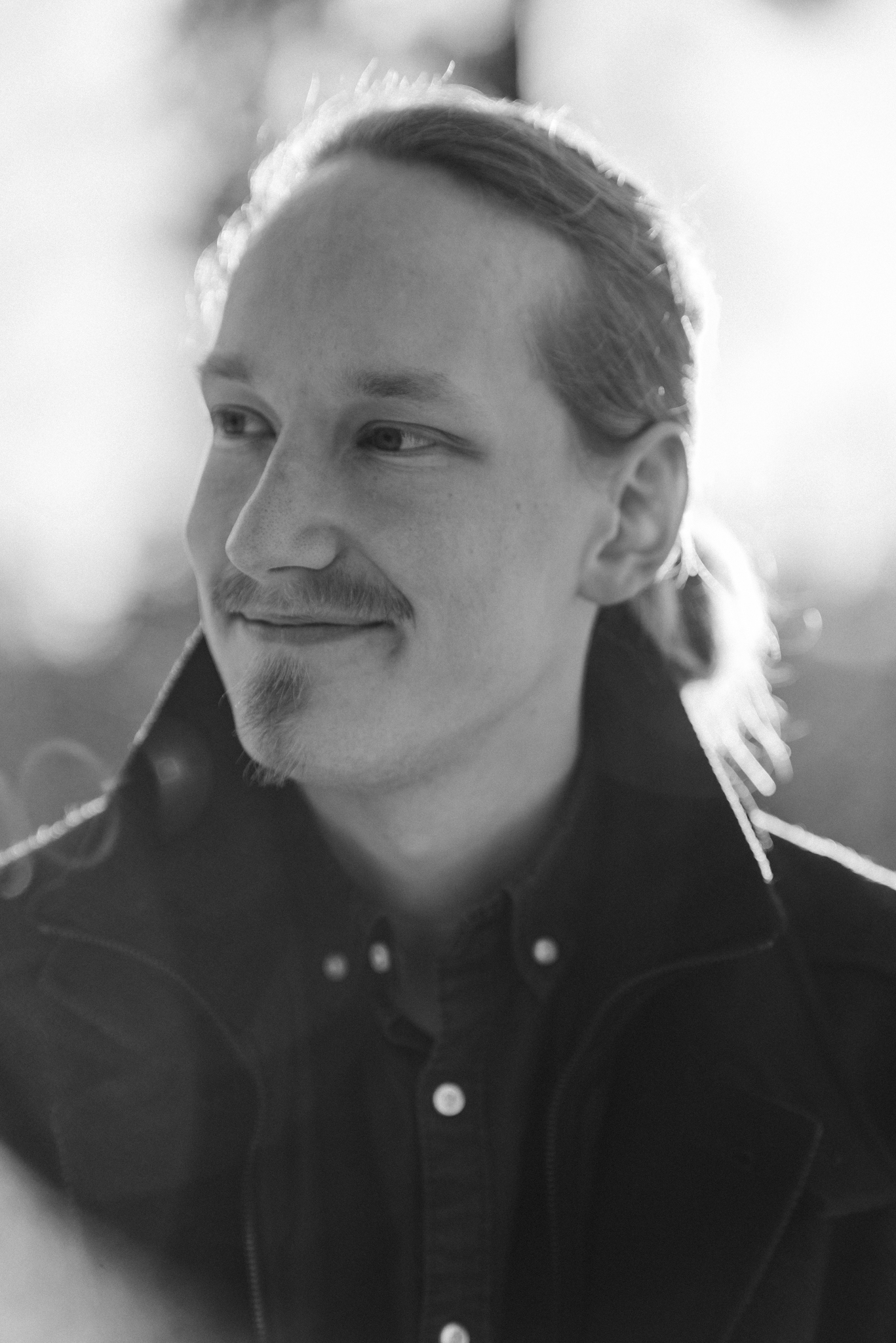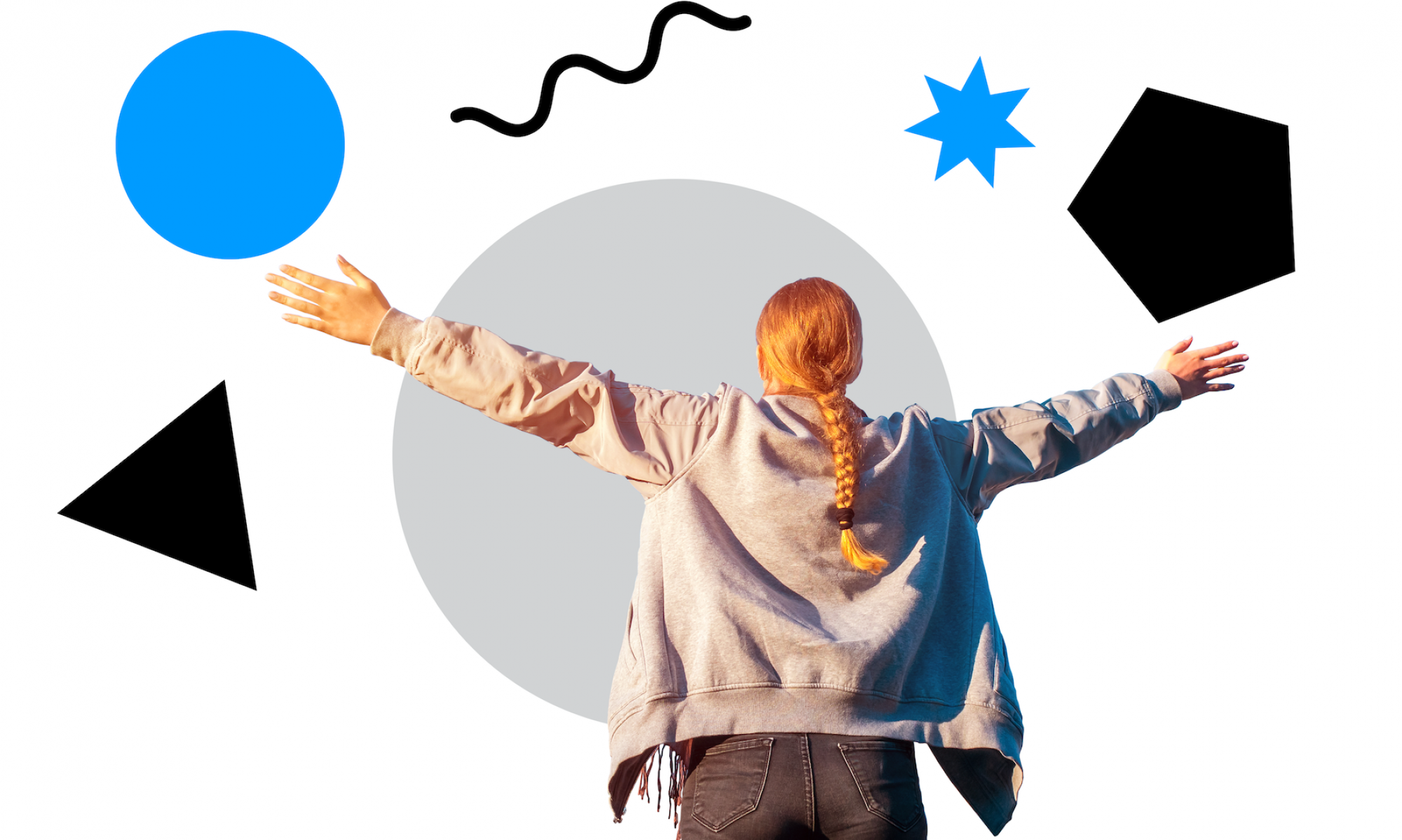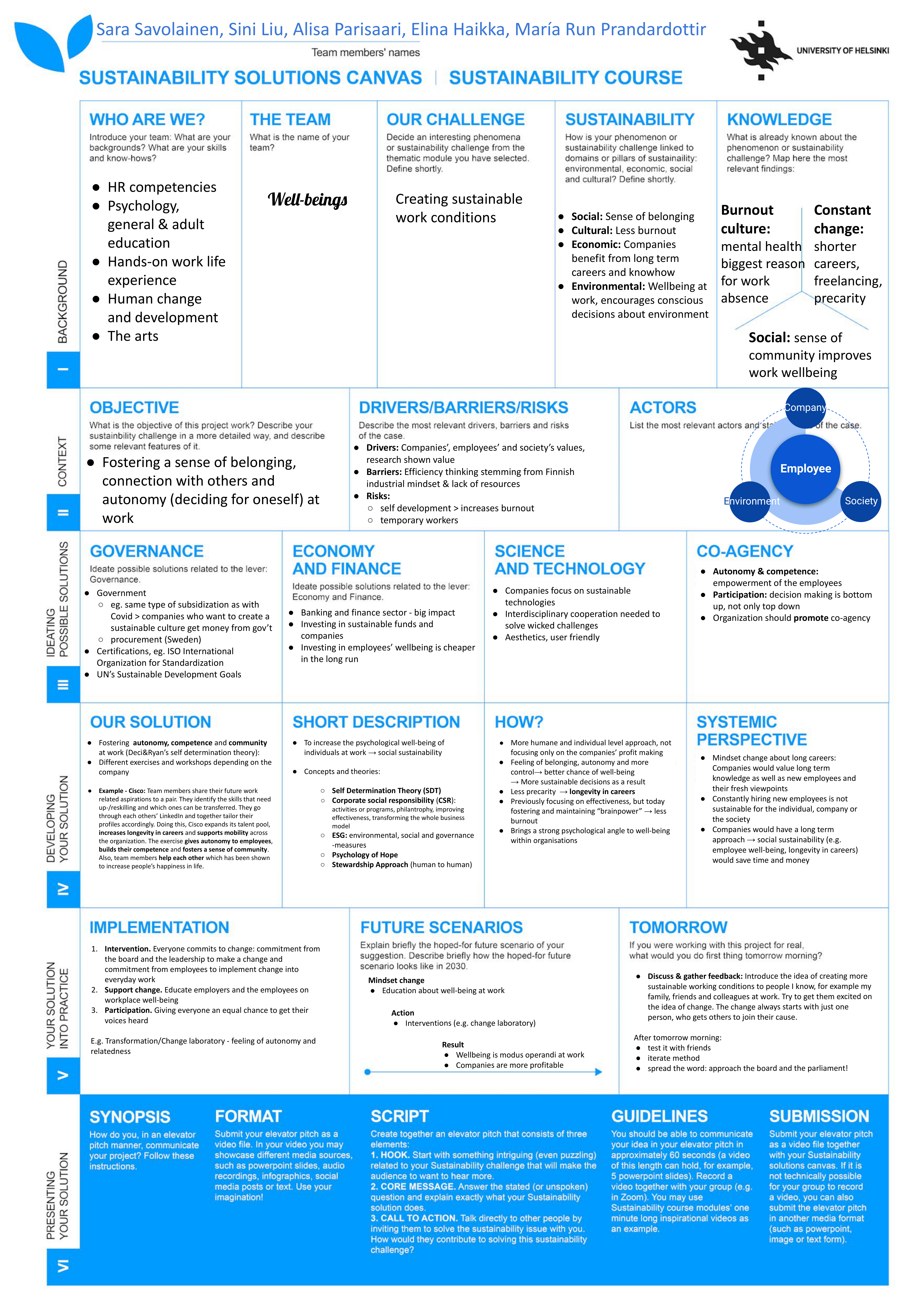
In English below!

Helsingin yliopiston monitieteinen Kestävyyskurssi järjestettiin kolmatta kertaa keväällä 2022. Toukokuussa haastattelimme kolmea kevään 2022 Kestävyyskurssille osallistunutta opiskelijaa, ja kuulimme heidän ajatuksiaan kurssista.
Geotieteiden ensimmäisen vuoden opiskelija Roosa Vuorinen (otsikkokuvassa oikealla) osallistui kurssille, sillä se loi hyvän jatkumon aiemmille fuksivuoden opinnoille. Roosa opiskeli Kestävyyskurssilla moduulin A: Global environmental commons.
Sini Liu (otsikkokuvassa vasemmalla), tietojenkäsittelytieteiden opiskelija, halusi kurssin avulla selvittää mitä voimme tehdä kestävyyden puolesta yksilöinä koulussa, töissä ja harrastuksina, sekä eri yhteisöissä. Sini valitsi kurssilla opiskeltavakseen temaattisen moduulin B: Human well-being and capabilities. “Kaikki lähtee ihmisestä. Kun me yksilöt voidaan paremmin, voidaan tehdä myös parempia, vastuullisempia päätöksiä”, toteaa Sini.
Petri Seppä (pienessä kuvassa) opiskelee luokanopettajaksi. “Ympäristöasiat ovat pitkän aikaa jo olleet lähellä sydäntäni ja koen, että kasvatuksella on erittäin tärkeä rooli yhteiskunnallisessa muutoksessa. Halusin kehittää omaa ymmärrystäni kestävän kehityksen ilmiöistä ja haasteista, sekä tutustua aihepiiriin tieteellisestä näkökulmasta.” Myös Petri opiskeli moduulin A: Global environmental commons.
Kestävyyskurssilla suuressa roolissa on monitieteisissä ryhmissä toteutettava projektityö. Roosan ja Petrin ryhmä keksi projektityönsä kestävyysratkaisuksi valmiin oppituntipankin, joka olisi mahdollisimman helposti lähestyttävä, tutkimukseen perustuva ja se olisi kaikkien opettajien vapaasti käytettävissä. “Vaikka perusopetuksen opetussuunnitelman perusteissa on ihailtavasti nostettu esiin kestävän kehityksen välttämättömyys, niin tuki ja apuvälineet sen toteuttamiseksi ovat harvassa. Aiheeseen perehtyneet opettajat osaavat varmasti tuoda kestävän kehityksen näkökulman osaksi opetusta, mutta olemme tilanteessa, jossa kaikkien opettajien olisi hyvä tehdä samoin. Kuinka voisimme siis tukea opettajia?” kertoo Petri ryhmänsä projektityöstä.
Sinin ryhmä taas lähestyi projektityötä hyvinvointia käsittelevästä moduulista. “Mielenterveydelliset syyt ovat nykyään suurin tekijä työkyvyttömyyseläkkeelle jäämisessä. Halusimme pureutua siihen, mitä työelämä voi tehdä asialle.” Sinin ryhmän ratkaisu ongelmaan on työelämän interventiot, eli pitkäaikainen ohjelma, jonka yritykset toteuttavat työntekijöille. Ohjelman ideana on, että työntekijät voivat kehittää omia taitojaan tiimin ja esihenkilön kanssa. Ohjelmassa työntekijä saa pohtia omia tavoitteitaan ja taitojaan työelämään liittyen.
Miltä opiskelijoista tuntui tehdä monitieteistä yhteistyötä? “Se oli mielestäni yksi kurssin parhaista puolista! Oli todella mielenkiintoista keskustella moduulin aihealueista sekä kuulla eri tieteenalojen näkökulmista ja lähestymistavoista. Monitieteellinen yhteistyö oli hedelmällinen kokemus ja sitä olisi mukava päästä toteuttamaan toistekin”, kommentoi Petri. “Mielestäni työskentely oli todella antoisaa ja ylitti odotukset. Uskalsimme keskustella tosi avoimesti ryhmätyöhön liittyvistä seikoista. Oli hienoa, että kaikki antoivat omalta tieteenalalta näkökulmia, joista saimme yhdistettyä yhteisen kokonaisuuden”, toteaa Roosa.
Kannustiko kurssi opiskelijoita oppimaan kestävyydestä lisää? “Tajusin kurssin myötä kuinka suppeaksi oma näkökulma kestävyyteen on vielä jäänyt. Kurssi todellakin innosti oppimaan lisää, ehkä jopa toisen tiedekunna kurssien kautta, joissa sivuttaisiin kestävyyttä”, toteaa Roosa. Siniä kiinnostaa oppia lisää oman alansa kestävyydestä: “Seuraavaksi haluaisin oppia lisää koodin kestävyydestä. Teknologia-alalla ei puhuta vielä paljoa kestävyydestä tai siitä, minkälainen koodi on kestävää. Meillä on niin paljon dataa, mutta hyödynnetäänkö sitä järkevästi, ja tarvitsemmeko me sitä oikeasti niin paljon?”
Petrin mielestä jokaisen opiskelijan tulisi käydä Kestävyyskurssi omien opintojensa aikana: “Kestävän kehityksen näkökulma tulisi olla läsnä kaikilla työaloilla, jotta voisimme ajoissa vastata tulevaisuuden haasteisiin riittävällä tiedolla ja osaamisella. Tulevan opettajuuden kannalta kestävä kehitys on nostettu esiin perusopetuksen opetussuunnitelman perusteissa ja se tulisi huomioida osana kaikkien oppiaineiden opetusta. Kestävyyskurssi tarjosi mielenkiintoisia näkökulmia tämän toteuttamiseksi.”
In English:
The University of Helsinki multidisciplinary Sustainability Course was held for the third time in the spring of 2022. In May, we interviewed three students who participated in the Spring 2022 Sustainability Course, and heard their thoughts on the course.
Roosa Vuorinen (in the heading photo on the right), a first-year student in geosciences, took part in the course, as it created a good continuation of her previous freshman year studies. Roosa studied the module A: Global environmental Commons in the Sustainability course.
Sini Liu (in the heading photo on the left), a student of computer science, wanted to take the course to find out what we can do for sustainability as individuals in school, work and hobbies, and in different communities. Sini chose the thematic module B: Human well-being and capabilities to study in the course. “Everything starts with an individual. When we individuals can be better, we can also make better, more responsible decisions”, says Sini.
Petri Seppä (in the small photo) is studying to be a class teacher. “Environmental issues have long been close to my heart, and I feel that education has a very important role to play in societal change. I wanted to develop my own understanding of the phenomena and challenges of sustainable development, and to get to know the subject from a scientific point of view. ” Petri also studied module A: Global environmental Commons.
The project assignment made in multidisciplinary groups plays a major role in the sustainability course. As a solution to the sustainability challenge of their project work group, Roosa and Petri’s team came up with a ready-made lesson bank that would be as accessible as possible, research-based and freely available to all teachers. “While the need for sustainable development has been admirably highlighted in the foundations of the basic education curriculum, support and tools to implement it are scarce. Teachers who are familiar with the subject will certainly be able to incorporate a sustainable development perspective into their teaching, but we are in a situation where all teachers should do the same. So how can we support teachers? ” says Petri about his group’s project work.
Sini’s group, on the other hand, approached the project work from a well-being point of view. “Mental health reasons are the biggest factor in disability retirement today. We wanted to know what work life can do about it.” Sini’s group’s solution to the problem is work life interventions, a long-term program that companies implement for their employees. The idea of the program is that employees can develop their own skills with the team and the supervisor. The program allows the employee to reflect on their own goals and skills related to working life.
You can read more about Roosa and Petri’s and Sini’s project works below!
How did the students feel about interdisciplinary collaboration? “It was one of the best parts of the course, I think! It was really interesting to discuss the topics of the module as well as to hear the perspectives and approaches of different disciplines. The interdisciplinary collaboration was a fruitful experience and it would be nice to have it implemented again”, commented Petri. “I think the group work was really rewarding and exceeded my expectations. We discussed issues related to the project assignment in a very open way. It was great that everyone gave perspectives from their own field of science, which we were then able to combine”, says Roosa.
Did the course encourage the students to learn more about sustainability? “With the course, I realized how narrow my own perspective on sustainability still is. The course really inspired me to learn more, maybe even through courses from another faculty concerning sustainability”, says Roosa. Sini is interested in learning more about sustainability in her own field: “Next, I would like to learn more about the sustainability of different codes. There is not much talk yet in the field of technology about sustainability or what kind of code is sustainable. We have so much data, but is it being used wisely, and do we really need it that much? ”
Petri believes that each student should take a Sustainability Course during their own studies: “The sustainability perspective should be present in all areas of work so that we can meet the challenges of the future in a timely manner with sufficient knowledge and skills. Sustainable development for future teaching is highlighted in the foundations of the basic education curriculum and should be taken into account as part of the teaching of all subjects. The sustainability course provided interesting perspectives to make this happen. ”
Roosa and Petri’s project work:
Group A01: Biodiversiteettipankkiirit
Objective: Changing human behavior so that it does not cause biodiversity loss.
Short description: We need to educate people about biodiversity and it’s importance. Sustainable development as a whole is taken into account in the national curriculum, but support for biodiversity is absent. We want to provide easy-to-use materials and ready-made learning sessions for teachers to use.



Elevator pitch:
Sinis’ project work:
Group B06: Well-Beeings
Objective: Fostering a sense of belonging, connection with others and autonomy (deciding for oneself) at work.
Short description: Fostering autonomy, competence and community
at work (Deci&Ryan’s self determination theory):
● Different exercises and workshops depending on the company
● Example – Cisco: Team members share their future work related aspirations to a pair. They identify the skills that need up-/reskilling and which ones can be transferred. They go through each others’ LinkedIn and together tailor their profiles accordingly. Doing this, Cisco expands its talent pool, increases longevity in careers and supports mobility across the organization. The exercise gives autonomy to employees, builds their competence and fosters a sense of community. Also, team members help each other which has been shown to increase people’s happiness in life.
(click canvas to enlarge)

